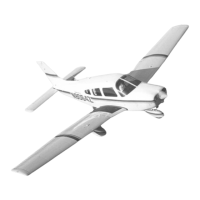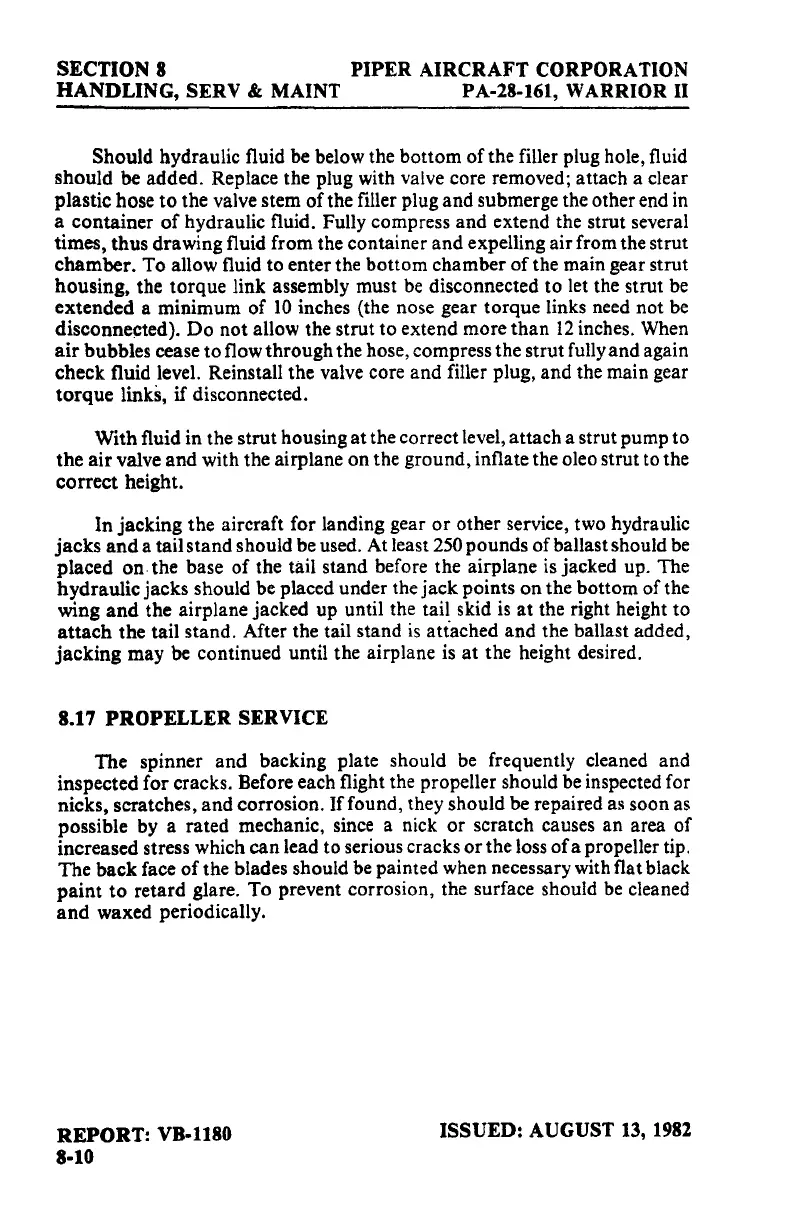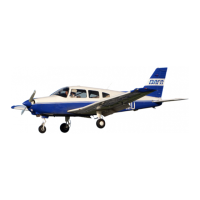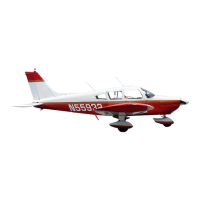SECTION
8
PIPER
AIRCRAFT
CORPORATION
HANDLING,
SERV & MAINT PA-28-161, WARRIOR
II
Should hydraulic fluid be below the bottom
of
the filler plug hole, fluid
should
be added. Replace the plug with valve core removed; attach a clear
plastic hose
to
the valve stem
of
the filler plug and submerge the other end in
a container
of
hydraulic fluid. Fully compress and extend the strut several
times, thus drawing fluid from the container and expelling air from the strut
chamber. To allow fluid to enter the bottom chamber
of
the main gear strut
housing, the torque link assembly must
be
disconnected to let the strut be
extended a minimum of
10
inches (the nose gear torque links need not
be
disconnected).
Do
not allow the strut
to
extend more
than
12
inches. When
air
bubbles cease
to
flow through the hose, compress the strut fully and again
check fluid level. Reinstall the valve core and filler plug, and the main gear
torque
links,
if
disconnected.
With fluid in the strut housing
at
the correct level, attach a strut pump to
the
air
valve and with the airplane on the ground, inflate the oleo strut to the
correct height.
In jacking the aircraft for landing gear
or
other service, two hydraulic
jacks
and
a tail stand should be used. At least
250
pounds of ballast should
be
placed on the base of the tail stand before the airplane
is
jacked up. The
hydraulic jacks should be placed under the jack points on the bottom of the
wing
and
the airplane jacked up until the tail skid
is
at
the right height to
attach
the tail stand. After the tail stand
is
attached and the ballast added,
jacking
may
be
continued until the airplane is
at
the height desired.
8.17
PROPELLER
SERVICE
The spinner
and
backing plate should be frequently cleaned and
inspected for cracks. Before each flight the propeller should be inspected for
nicks, scratches, and corrosion.
If
found, they should be repaired
as
soon
as
possible
by
a rated mechanic, since a nick or scratch causes an area of
increased stress which can lead to serious cracks
or
the loss
of
a propeller tip.
The back face
of
the blades should
be
painted when necessary with flat black
paint
to
retard glare. To prevent corrosion, the surface should
be
cleaned
and
waxed periodically.
REPORT:
VB-l180
8-10
ISSUED:
AUGUST 13, 1982

